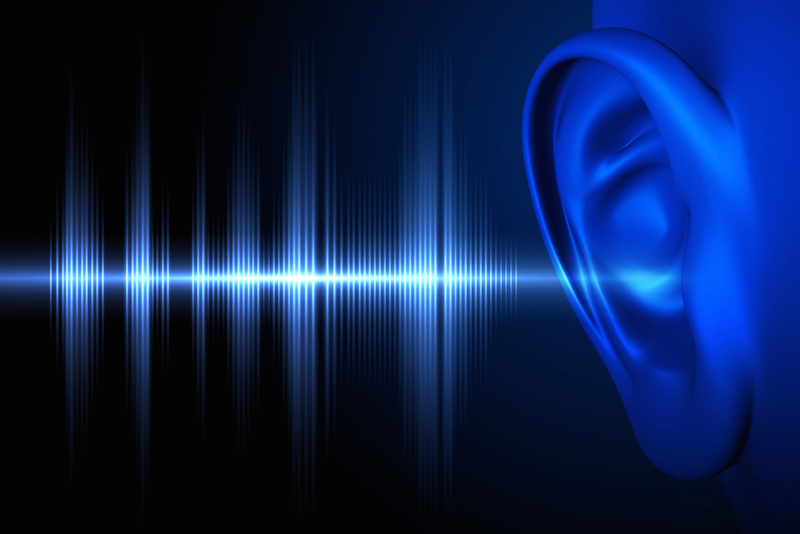Hear This: Scientists Regrow Sound-Sensing Cells

Scientists have coaxed sound-sensing cells in the ear, called "hair cells," to grow from stem cells. This technique, if perfected with human cells, could help halt or reverse the most common form of hearing loss, according to a new study.
These delicate hair cells can be damaged by excessive noise, ear infections, certain medicines or the natural process of aging. Human hair cells do not naturally regenerate; so as they die, hearing declines.
More than 20 million Americans have significant hearing loss resulting from the death or injury of these sensory hair cells, accounting for about 90 percent of hearing loss in the United States, according to the Centers for Disease Control and Prevention.
In the new study, scientists at Harvard University and the Massachusetts Institute of Technology reported that they isolated stem cells from a mouse ear, discovered how to get them to multiply in a laboratory setting, and then converted them into hair cells. Their previous efforts, in 2013, produced only 200 hair cells. With a new technique, however, the research team has increased this number to 11,500 hair cells that were grown from one mouse ear. [Inside Life Science: Once Upon a Stem Cell]
Their paper describing the stem cell advance appears today (Feb. 21) in the journal Cell Reports.
Jeffrey Corwin, an expert on hair-cell regeneration and a professor of neuroscience at the University of Virginia School of Medicine, who was not part of this new research, called it "a very impressive study…by a dream team of scientists" and "a big advance" in the pursuit of regenerating these sensory hearing cells in humans.
Hair cells grow in bundles in the inner ear, and are so named because they look like hairs. Many hair cells within the ear are involved in balance, not hearing. But in the cochlea, the hearing organ deep in the ear canal, there are two kinds of specialized hair cells: outer hair cells, which amplify pitch and enable humans to discern subtle differences in sound; and inner hair cells, which convert sound into electrical signals sent to the brain. Humans have two cochleae (one in each ear), and each has only about 16,000 hair cells.
Get the world’s most fascinating discoveries delivered straight to your inbox.
In fish, birds, lizards and amphibians, cochlear hair cells that die can be regenerated in as fast as a few days. However, in mammals, for the most part, the cells cannot regenerate — except for mice and other small mammals when they are newly born. But since so many species can naturally regenerate hair cells from a stem cell precursor, including some newborn mammals, many researchers have been motivated to find a way to rekindle hair-cell regeneration in adult mammals and, of course, in humans, Corwin said.
The new research was done by a team led by Albert Edge, director of the Tillotson Cell Biology Unit at the Massachusetts Eye and Ear Infirmary and professor of otolaryngology at Harvard Medical School in Boston.
In 2012, Edge's group discovered stem cells in the ear called Lgr5+ cells. These cells are also found in the gut, where they actively regenerate the entire lining of human intestines every eight days. The research team soon found a way to coax the Lgr5+ cells to differentiate into hair cells, instead of intestinal cells. But the process was slow, and the yield was low.
Now, the researchers have increased the yield dramatically by inserting a new step. After removing Lgr5+ cells from mice, the researchers first get them to divide in a special growth medium. This step produced a two-thousandfold increase in Lgr5+ cells, Edge told Live Science. Then, the researchers moved these stem cells into a different kind of growth culture and added certain chemicals to turn the Lgr5+ cells into hair cells. [7 Ways the Mind and Body Change With Age]
These laboratory-grown hair cells appear to have many of the characteristics of actual inner and outer hair cells, although they might not be fully functional, Edge said. The most immediate use for this new technique will be to create a large set of the cells to test drugs and to identify compounds that can heal damaged hair cells or regrow them and restore hearing, Edge said.
Scientists have had difficulty testing drugs on large batches of actual hair cells because there are so few in mammalian ears and they are deep in the cochlea, hard to extract, Edge said.
The researchers have reason to believe the technique to regenerate fully functional hair cells in humans could someday work. As reported in their paper, the team tested the technique on a sample of healthy ear tissue from a 40-year-old patient who underwent a labyrinthectomy (removal of parts of the inner ear) to access a brain tumor. The adult human stem cells isolated from this tissue also multiplied and differentiated into hair cells, although not as robustly as the mouse cells did.
But as Corwin noted about Edge's research, "You can see in their paper that they are perfecting their technique as they go along."
Follow Christopher Wanjek @wanjek for daily tweets on health and science with a humorous edge. Wanjek is the author of "Food at Work" and "Bad Medicine." His column, Bad Medicine, appears regularly on Live Science.

Christopher Wanjek is a Live Science contributor and a health and science writer. He is the author of three science books: Spacefarers (2020), Food at Work (2005) and Bad Medicine (2003). His "Food at Work" book and project, concerning workers' health, safety and productivity, was commissioned by the U.N.'s International Labor Organization. For Live Science, Christopher covers public health, nutrition and biology, and he has written extensively for The Washington Post and Sky & Telescope among others, as well as for the NASA Goddard Space Flight Center, where he was a senior writer. Christopher holds a Master of Health degree from Harvard School of Public Health and a degree in journalism from Temple University.


